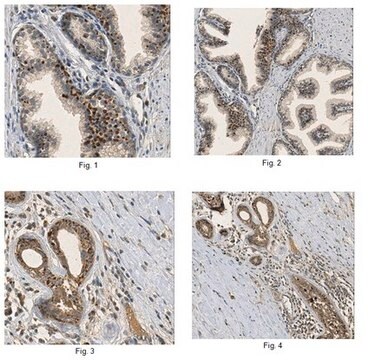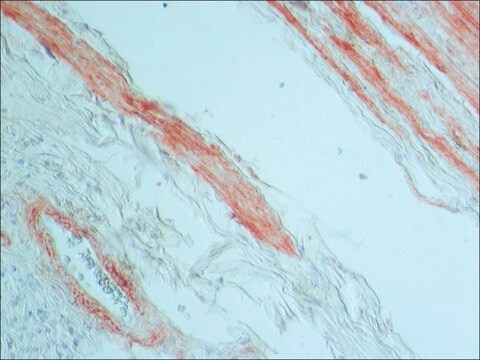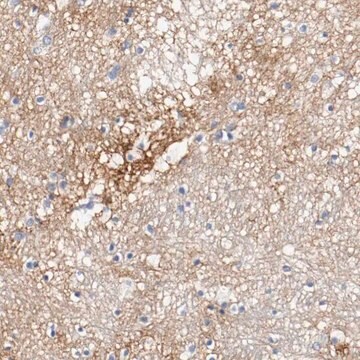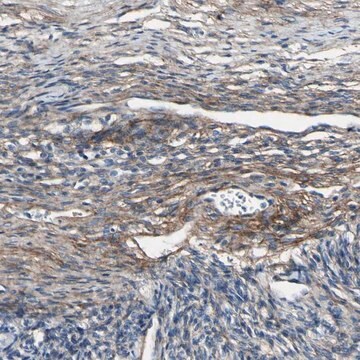ABS1593
Anti-sFRP-1 Antibody
from rabbit
Sinônimo(s):
Secreted frizzled-related protein 1, FRP-1, SARP-2, Secreted apoptosis-related protein 2, sFRP-1
About This Item
Produtos recomendados
fonte biológica
rabbit
Nível de qualidade
forma do anticorpo
purified antibody
tipo de produto de anticorpo
primary antibodies
clone
polyclonal
reatividade de espécies
human, mouse
técnica(s)
immunohistochemistry: suitable
neutralization: suitable
western blot: suitable
nº de adesão NCBI
nº de adesão UniProt
Condições de expedição
ambient
modificação pós-traducional do alvo
unmodified
Informações sobre genes
human ... SFRP1(6422)
Descrição geral
Especificidade
Imunogênio
Aplicação
Neutralizing Analysis: A representative lot, in combination with recombinant Wtn5a and an anti-DKK1 antibody, increased migration and mammosphere formation of EpCAM-positive (EPC+) human mammary epithelial cells (MECs) (Scheel, C., et al. (2011). Cell. 145(6):926 940).
Neutralizing Analysis: A representative lot enhanced the formation of TRACP+ mutinucleated and mononucleated cells from co-cultured murine splenic and primary osteoblastic cells upon PGE2 and 1 ,25 (OH)2D3 stimulatation (Häusler, K.D., et al. (2004). J. Bone Miner. Res. 19(11):1873-1881).
Note: Detection of endogenous sFRP-1 in whole cell lysates or tissue samples is difficult without an enrichment step prior to immunoblotting (e.g. by immunoprecipitation or heparin affinity chromatography).
Signaling
Qualidade
Western Blotting Analysis: 1 µg/mL of this antibody detected in 10 ng of mammalian expressed, secreted human sFRP-1.
Descrição-alvo
forma física
Armazenamento e estabilidade
Handling Recommendations: Upon receipt and prior to removing the cap, centrifuge the vial and gently mix the solution. Aliquot into microcentrifuge tubes and store at -20°C. Avoid repeated freeze/thaw cycles, which may damage IgG and affect product performance.
Outras notas
Exoneração de responsabilidade
Não está encontrando o produto certo?
Experimente o nosso Ferramenta de seleção de produtos.
Código de classe de armazenamento
12 - Non Combustible Liquids
Classe de risco de água (WGK)
WGK 2
Ponto de fulgor (°F)
Not applicable
Ponto de fulgor (°C)
Not applicable
Certificados de análise (COA)
Busque Certificados de análise (COA) digitando o Número do Lote do produto. Os números de lote e remessa podem ser encontrados no rótulo de um produto após a palavra “Lot” ou “Batch”.
Já possui este produto?
Encontre a documentação dos produtos que você adquiriu recentemente na biblioteca de documentos.
Nossa equipe de cientistas tem experiência em todas as áreas de pesquisa, incluindo Life Sciences, ciência de materiais, síntese química, cromatografia, química analítica e muitas outras.
Entre em contato com a assistência técnica







